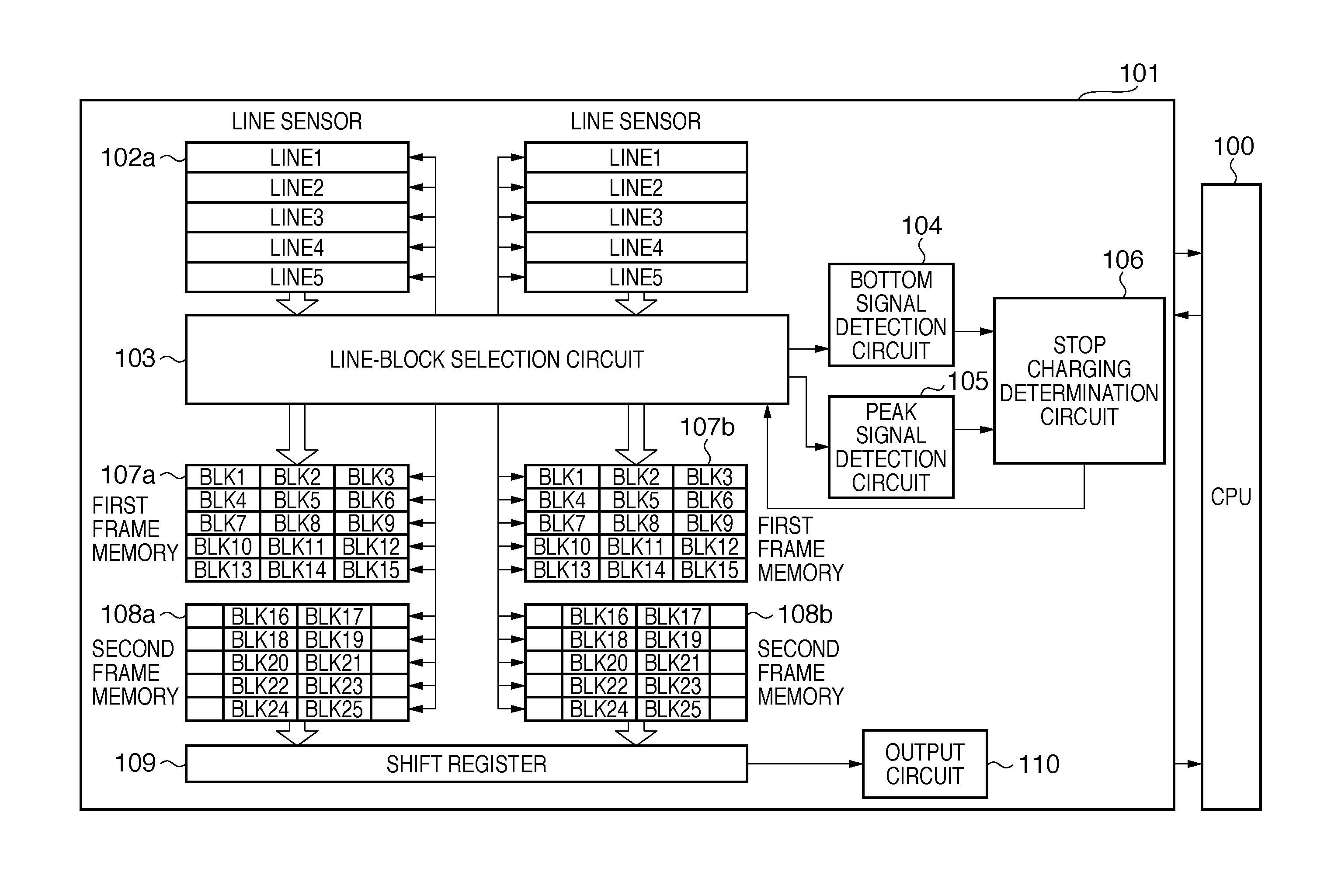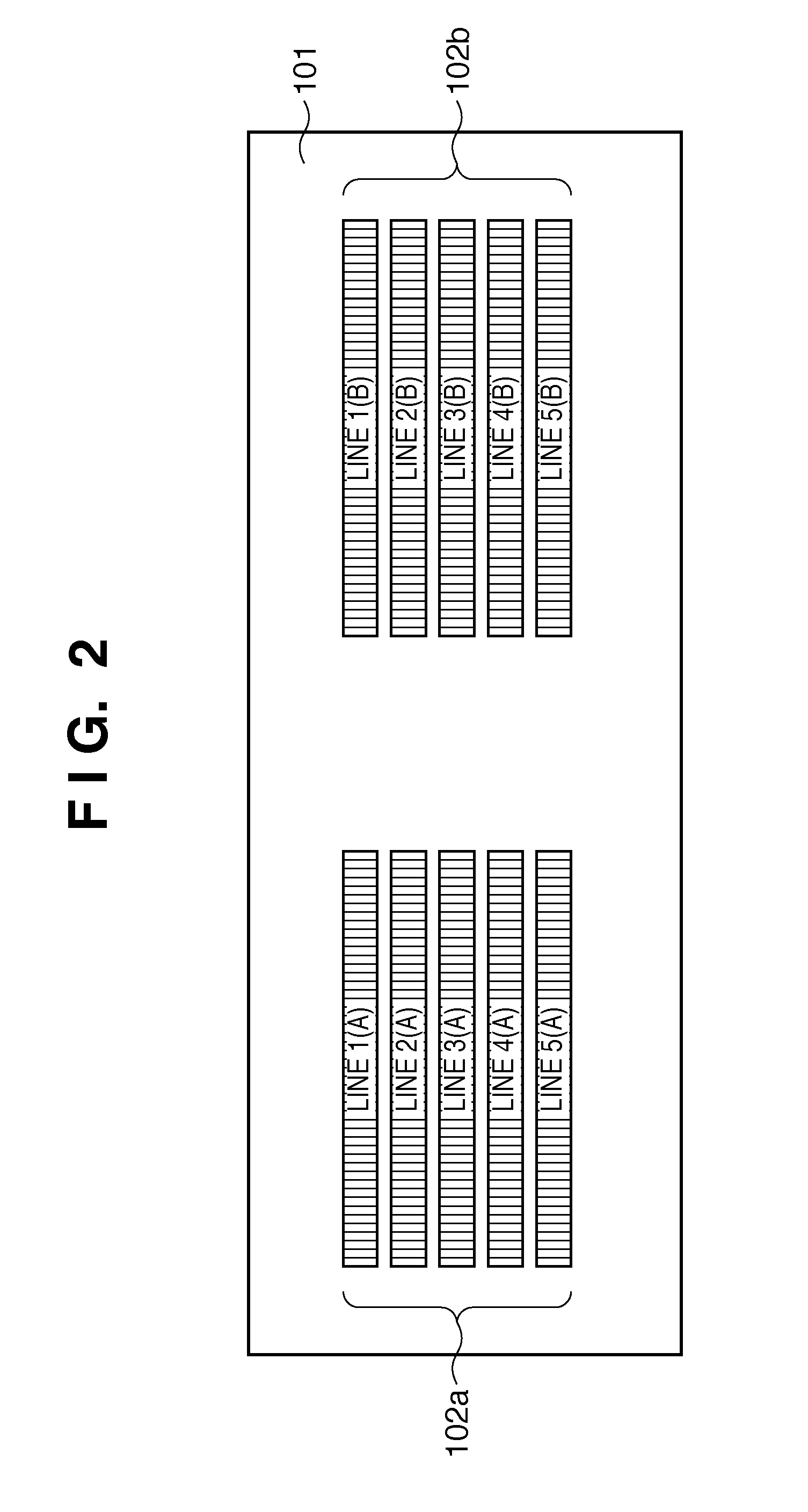Focus detection apparatus and focus detection method
a technology of focus detection and focus detection, which is applied in the direction of camera focusing arrangement, printers, instruments, etc., can solve the problems the inability to control the focus detection for a significantly defocused image, and achieve the effect of reducing the accuracy of focus detection
- Summary
- Abstract
- Description
- Claims
- Application Information
AI Technical Summary
Benefits of technology
Problems solved by technology
Method used
Image
Examples
first embodiment
[0025]FIG. 1 is a block diagram illustrating the configuration of a camera body according to a first embodiment of the present invention, and in the first embodiment, the camera body is intended for use with a removable imaging lens (not shown) attached. As a matter of course, the present invention is not to be considered limited to this camera, it comes near to stating the obvious that the present invention may be directed to a camera integrated with an imaging lens.
[0026]In FIG. 1, reference numeral 100 denotes a microcomputer (hereinafter, referred to as a “CPU”) for a camera. The CPU 100 has a memory circuit 209 built-in, such as a ROM storing a program for controlling the camera operation, a RAM for storing variants, and an EEPROM (electrically erasable programmable read-only memory) for storing various types of parameters.
[0027]To the CPU 100, a signal input circuit 204, a lens communication circuit 205, an image capturing sensor 206, an AE sensor 207, a shutter control circui...
second embodiment
[0060]Next, a second embodiment of the present invention will be described. The AF sensor 101 in the first embodiment described above divides the groups of line sensors 102a and 102b in accordance with the first divisional pattern shown in FIG. 4A and the second divisional pattern shown in FIG. 4B. In the second embodiment, another example of divisional patterns will be described which are different from the first and second divisional patterns.
[0061]FIGS. 7A and 7B show divisional patterns in the second embodiment. FIG. 7A shows a third divisional pattern, in which each line sensor is divided into three, and only pixel signals from two blocks at either end are used for focus detection processing. In addition, FIG. 7B shows a fourth divisional pattern, in which each line sensor is divided into three, and only pixel signals from one central block are used for focus detection processing. It is to be noted that the third divisional pattern and the fourth divisional pattern have differe...
PUM
 Login to View More
Login to View More Abstract
Description
Claims
Application Information
 Login to View More
Login to View More - R&D
- Intellectual Property
- Life Sciences
- Materials
- Tech Scout
- Unparalleled Data Quality
- Higher Quality Content
- 60% Fewer Hallucinations
Browse by: Latest US Patents, China's latest patents, Technical Efficacy Thesaurus, Application Domain, Technology Topic, Popular Technical Reports.
© 2025 PatSnap. All rights reserved.Legal|Privacy policy|Modern Slavery Act Transparency Statement|Sitemap|About US| Contact US: help@patsnap.com



